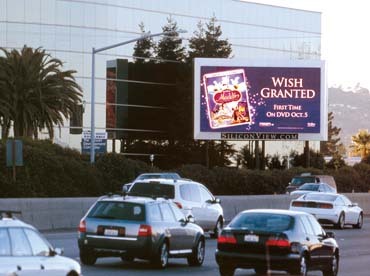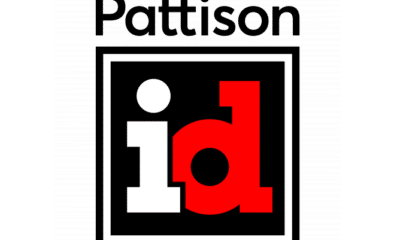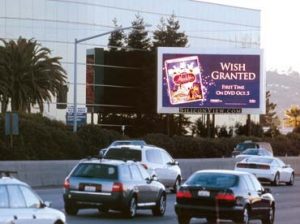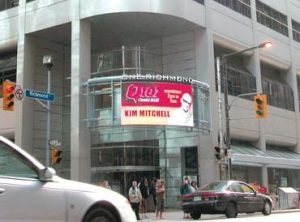By the time you read this, I’ll have co-chaired the first Intertech Power Signs Conference in Las Vegas. The conference is the third of its type in the United States this year and one of many held around the world. Why is the programmable-sign industry suddenly worthy of such study? The answer lies more in the advertising world than in the sign industry as we’ve traditionally known it. Although programmable displays have been used for more than 50 years, they haven’t been accepted into the world of advertising as media." However, with LEDs and LCDs continually evolving as visually powerful, high-resolution, programmable products, suddenly, those sign-industry lightboxes have morphed into "legitimate media." The timing for our industry couldn’t be better. For a decade, "dilution" has been a key buzzword in advertising. With each traditional medium, options have proliferated, thereby diluting the value of each ad. In the past, a Chevrolet dealer in Dubuque, IA, could reach his entire television market with ad purchases on four stations; he now must face the reality that local televisions might be tuned to more than 150 channels. Similarly, radio markets are being decimated by ad-free satellite radio, projected to be in most cars before 2010. Newspaper readership is down. Direct mail is routinely tossed. The Internet competes with all media. So how does a self-respecting retailer get the word out these days, and to whom? The once-lowly, roadside message center, with its new powerhouse programming technologies, is being embraced as a new medium. A well-placed, properly sized and effectively programmed display can deliver advertising messages to a potent audience while that audience can immediately act. Because the messages are frequently changed and are displayed in illuminated color, the awareness level and readership are "off the charts," to quote one Madison Avenue executive at the September OAAA Star Showcase. The programmable sign is now experiencing its first taste of "legitimacy" in advertising circles. Now that we, the programmable-sign industry, have produced a viable medium, the creative types view it as a new and exciting blank palette. However, many scary and untested factors play into this new technology. How do you ensure performance? How do you validate this form of advertising to the client? How do you create ads specific to the medium, rather than modify print or television ads? How do you educate government bodies to regulate the new medium? How do you size a display for a particular audience? How do you use co-op advertising? What about standardization? The sign industry has much to prove to the advertising industry before our roadside signs are fully embraced by advertisers. Many considerations must precede the first advertisement. With the technology itself, you must utilize the right size, the right viewing angle, the most effective resolution, the right brightness and the proper display placement. Once the display is in place, maintenance issues arise. Other considerations include content creation, message frequency and duration, number of messages, and validation of the message displayed (to how many people and when). Surrounding all of this is how to value the advertising, how to sell it and to whom? Our new medium has a significant disconnect between the providers and the users. The advertising community predominantly comprises folks with specialized training in advertising and various media. Conversely, sign companies provide most programmable displays, which equates to television advertising being sold by the television manufacturers. Therefore, to grow the new programmable-display industry, the sign industry must straddle the fence between industries. As technological capabilities have grown, we must maintain an understanding of how to best utilize it. To a retailer, brand manager or manufacturer with co-op money to spend, these displays aren’t signs or message centers, they’re specialty-advertising media. As media buyers, these people don’t want to learn about diodes, angles of view or brightness. They want to buy the media from people and companies that can provide the whole package, not just a technology box. They want to buy from professionals who know the medium’s use and can help them utilize it to its fullest. The Power Signs Conference, and those of its ilk, help bridge the gap between the sign industry and the advertising community by specifically addressing those questions asked above. While many will wonder about the time and money spent on such conferences, I hope more of these valuable events occur and become well attended. As awareness of the new electronic-sign media’s power grows, the sign industry will evolve. Although signs will always be designed for image and identity, an ever-increasing percentage of signs will add an advertising or sales component using the programmable technology. I predict companies that don’t offer programmable-technology signs will suffer as their customers and clients embrace the new media’s power. This pressures sign producers to step "outside the box" to embrace novel thinking. Fortunately, the technology itself has progressed measurably in recent years. There’s little reason to be intimidated by the electronic-digital-sign industry. Producers of high-quality, dependable display products abound. Programming the signs has become easier. Likewise, to service such a sign, we can swap failed parts with new ones from an inventory supplied with the sign. Failed parts are then sent back to the manufacturer for replacement or repair. There’s a lot to learn, but it’s well worth the investment. The burgeoning, modern, electronic-digital-display industry is at the beginning of meteoric growth. Join us on the ride.


 Photo Gallery2 weeks ago
Photo Gallery2 weeks ago
 Paula Fargo2 weeks ago
Paula Fargo2 weeks ago
 Real Deal1 week ago
Real Deal1 week ago
 Photo Gallery2 weeks ago
Photo Gallery2 weeks ago
 Projects1 week ago
Projects1 week ago
 Business Management1 week ago
Business Management1 week ago
 News1 day ago
News1 day ago
 News1 week ago
News1 week ago


















